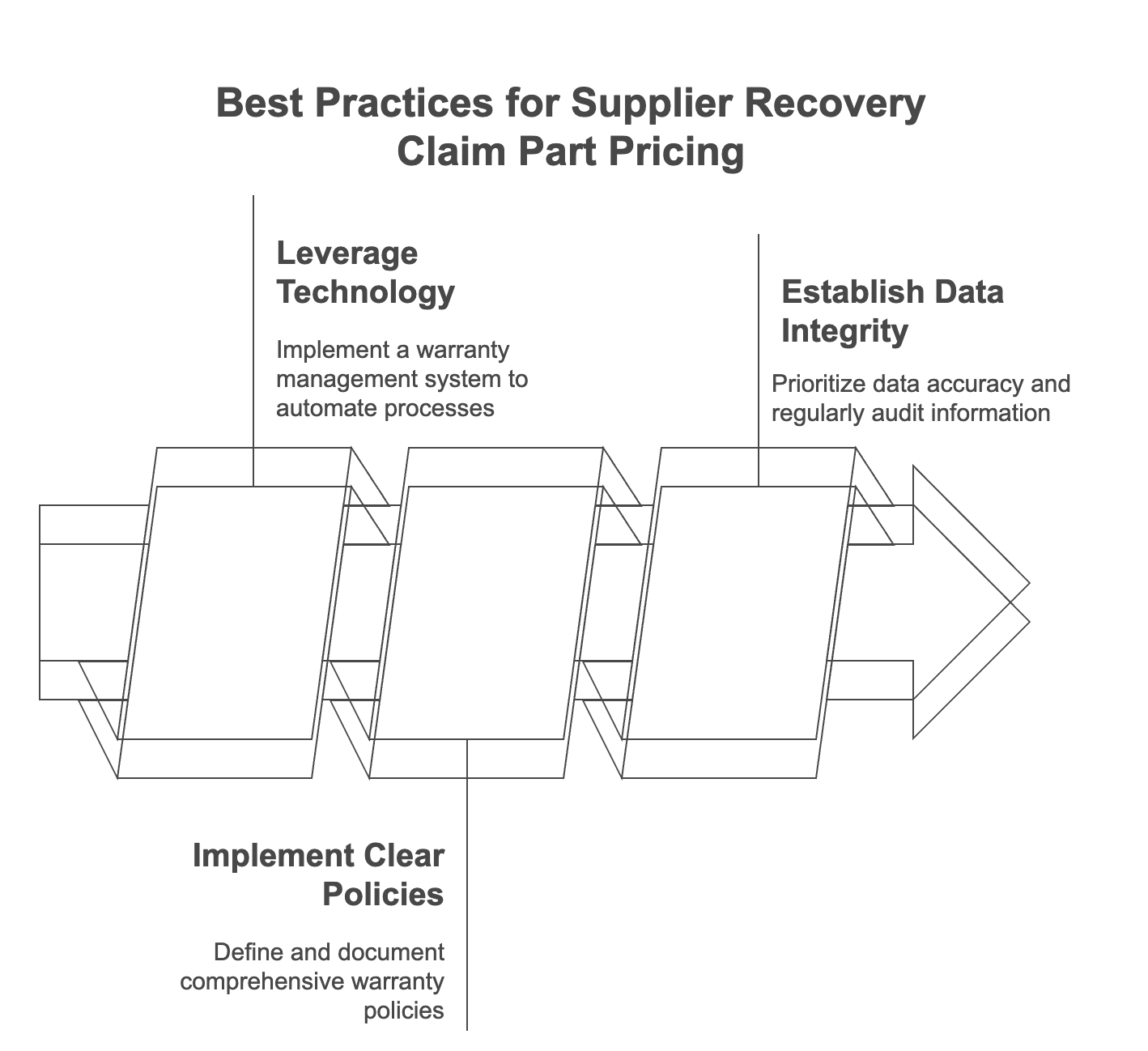In the complex world of warranty management and supplier recovery, accurate and efficient claim part pricing is crucial. But navigating the intricacies of part pricing, supplier agreements, and warranty terms can be challenging for many businesses. This is where a deep understanding of claim part pricing can make all the difference.
Effective claim part pricing requires a systematic approach that ensures fairness, transparency, and accurate if not optimal financial outcomes. It's about finding a balance between recouping costs from suppliers and maintaining strong relationships with them. This balance is essential for long-term success in any industry that deals with warranties and supplier relationships.

Table Of Contents:
The Nuances of Claim Part Pricing
Claim part pricing, a critical aspect of warranty management, directly impacts a company's profitability and supplier relationships. It involves determining the price of parts claimed under warranty, taking into account various factors like the part's purchase price, handling charges, transportation costs, and applicable warranty agreements with suppliers.
Having a clear understanding of these factors and how they interact is crucial for businesses to make informed decisions regarding claim part pricing. Effective claim part pricing not only ensures fair reimbursement but also helps maintain positive relationships with suppliers.
Factors Influencing Claim Part Pricing
Several key factors play a crucial role in establishing appropriate claim part pricing:
- Moving Average Price: Utilizing the moving average price (MAP) is a common approach for determining a part's current value, reflecting price fluctuations over time.
- Vendor Agreements: Negotiated contracts with suppliers often outline specific terms related to warranty claims, including pre-agreed upon pricing for replacement parts or labor. These agreements act as a guideline for both parties involved in a warranty claim, ensuring a smooth and transparent process. Pre-negotiated prices avoid supplier push-back and renegotiating prices.
- Warranty Policies: A company's internal warranty policies and procedures as well as the supplier's warranty terms determine terms and conditions of warranty coverage, including factors such as the warranty period, eligible claims, and any limitations. These policies should be regularly reviewed and periodically renegotiated with the supplier base, and updated in the system to ensure they remain relevant and effective.

Challenges in Claim Part Pricing
Implementing a fair and effective claim part pricing structure presents several challenges. Addressing these hurdles requires careful consideration and robust processes:
- Data Management: Maintaining accurate and up-to-date information on part prices, vendor agreements, and warranty policies is paramount for accurate claim processing. This includes having a system in place to track price changes, manage vendor information, and update warranty policies as needed.
- Manual Processes: Relying on manual methods for data entry, verification, and calculation can introduce errors and inefficiencies. Automating these processes can significantly improve accuracy, reduce processing time, and free up staff to focus on more strategic tasks.
- Lack of Standardization: Inconsistent pricing practices or a lack of standardized procedures can lead to disputes with suppliers and inaccurate cost recovery. Implementing standardized procedures across the organization helps to ensure consistency and fairness in claim part pricing.

Best Practices for Claim Part Pricing
By adopting best practices, businesses can overcome common hurdles and establish a more robust system. Here are some effective strategies:
- Leverage Technology: Employ a dedicated warranty management system or software solution such as the SAP warranty management solution to automate processes like pricing calculations, data validation, and claim tracking. This not only enhances accuracy but also streamlines the entire workflow, freeing up valuable resources.
- Implement Clear Policies: Define and document comprehensive warranty policies and procedures that address claim part pricing explicitly. Clearly outlining these guidelines for both internal teams and suppliers helps minimize disputes and ensures consistency. Transparency fosters trust and smooths out any potential friction points.
- Establish Data Integrity: Prioritize data accuracy and regularly audit part pricing information and pricing rules to reflect current market values. Maintaining accurate records ensures fair reimbursements and minimizes the risk of financial losses. Data integrity is crucial for making informed decisions about claim part pricing and avoiding potential financial losses.

Conclusion
Accurate and well-managed claim part pricing is more than just a financial necessity. It is a key driver for customer satisfaction, efficient warranty operations, and strong supplier relationships. By understanding the factors at play and implementing the right systems and strategies, businesses can master claim part pricing to drive efficiency, improve profitability, and gain a competitive advantage in today's marketplace.
If you have warranty claims pricing and supplier recovery management issues you would like to discuss, please hit the button below to book a meeting:

